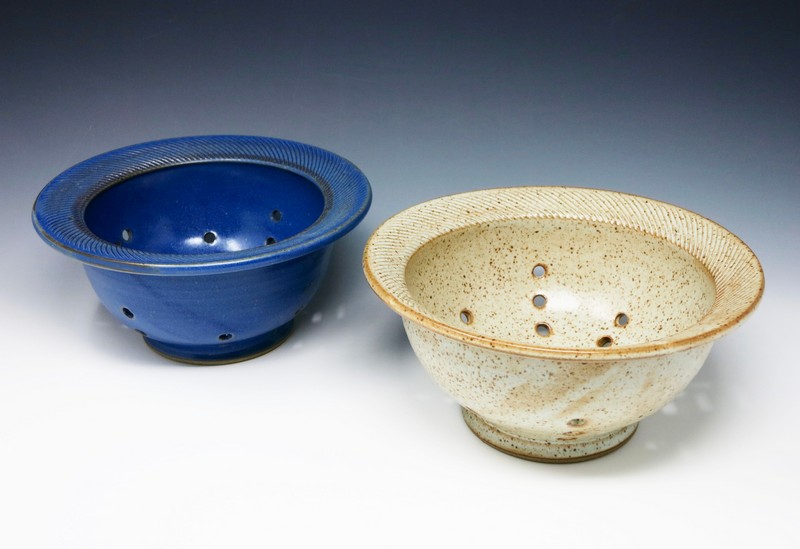
Supplies Needed:
- Blackjack Clay Natural Kiln Fire Stoneware
- Potter’s Wheel
- Bat
- Water Bucket
- Sponge
- Wooden Rib Tool
- Kidney Shape Rib Tool
- Fettling Knife
- Trimming Tool
- Shammy
- Texture Tool
- Wire Tool
- Scoring Tool
- Foam Bat
- Decorating Disk
- Clay Hole Punch
- Kiln
- Cone 10 High Fire glaze
Preparing The Clay
Wedge
Weigh out desired amount of clay. (2.5 pounds of clay was used for this sample colander.)
Prepare the clay by wedging it.
*Wedging is the process of pushing and pressing on clay to expel all air bubbles trapped in it and to bring the clay to a uniform, consistent moisture level.
Step 1
Centering
Form clay into a sphere and slam it onto the center of the bat attached to the potter’s wheel.
Wet hands and clay.
Turn the potter’s wheel on and center the clay.
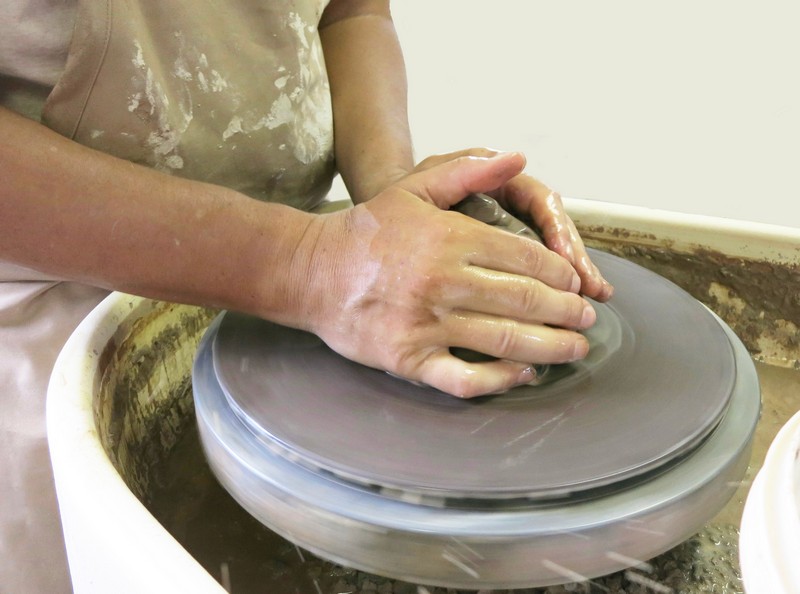
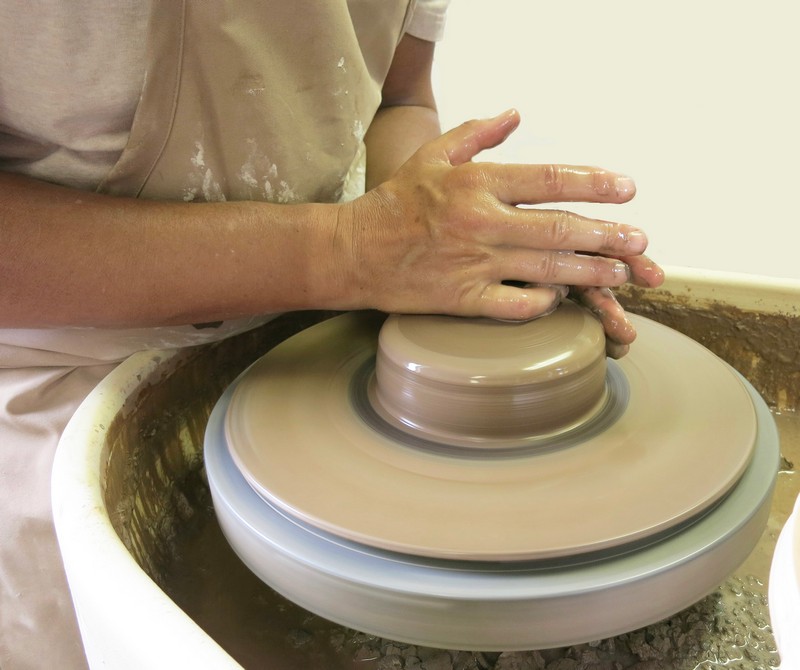
Step 2
Open The Form
Insert one finger to start into the center of the clay.
Using fingers firmly pull the clay back towards the body creating an opening in the clay.
Repeat several times until the clay is the desired width.
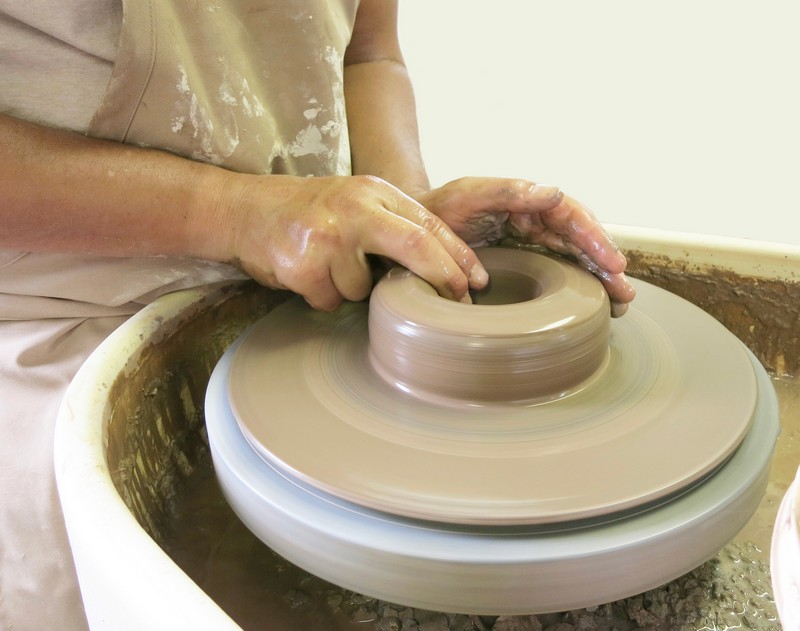
Step 3
Creating An Undercut
Run a finger under the bottom of the clay form to create an undercut.
This undercut will be used to form the colander’s base.
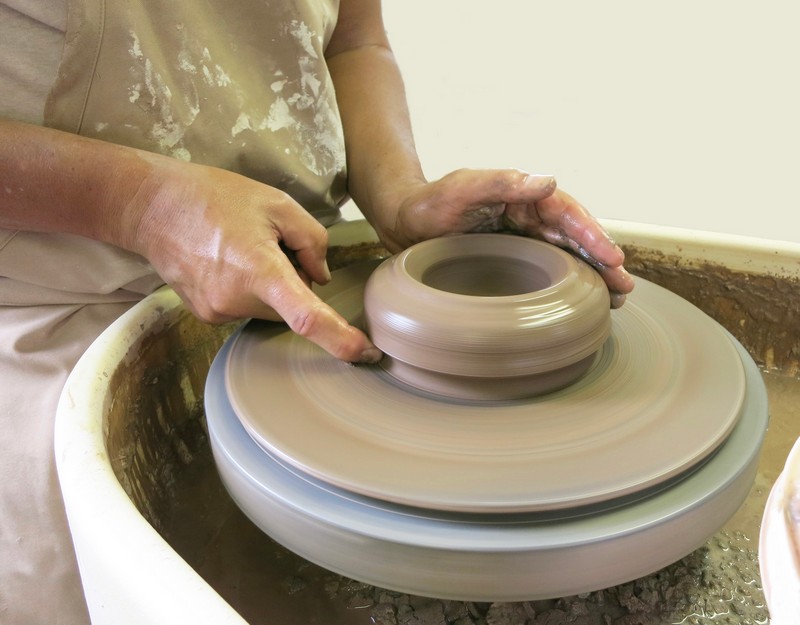
Step 4
Walls
Pull the clay up from the bottom in-between fingertips to create the walls of the form.
Repeat until walls are the desired thickness and height.
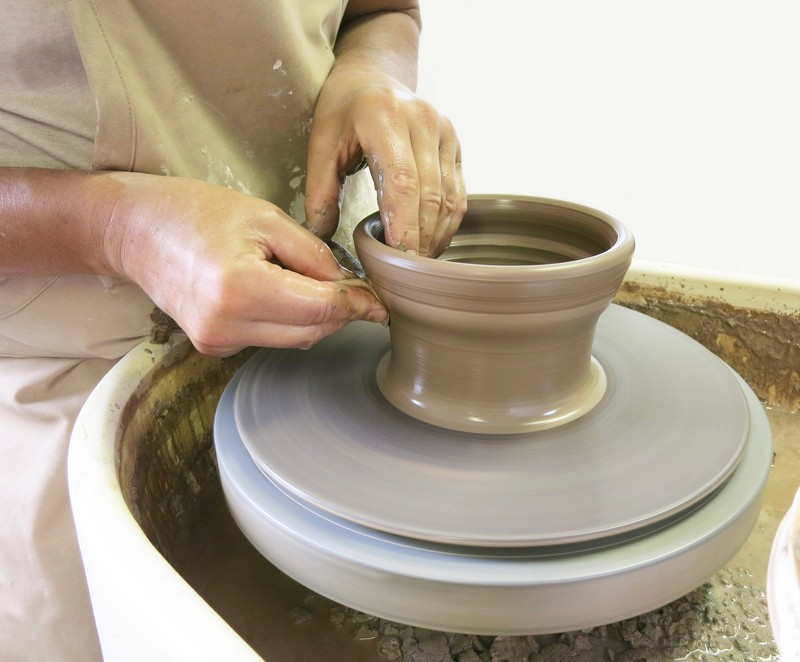
Use a sponge and rib to flare out the walls of the form.
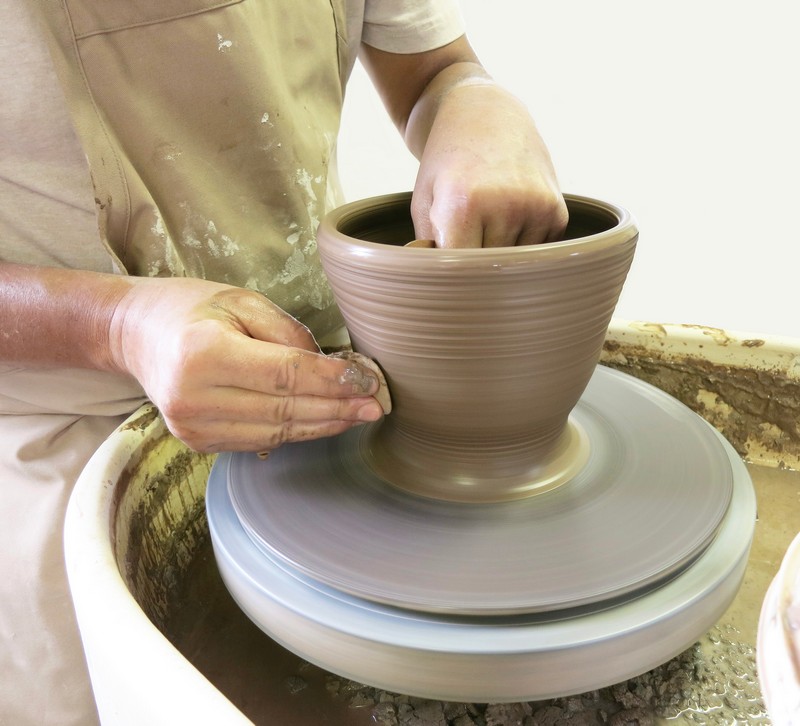
Step 5
Rim
Smooth the rim of the bowl with a wet shammy.
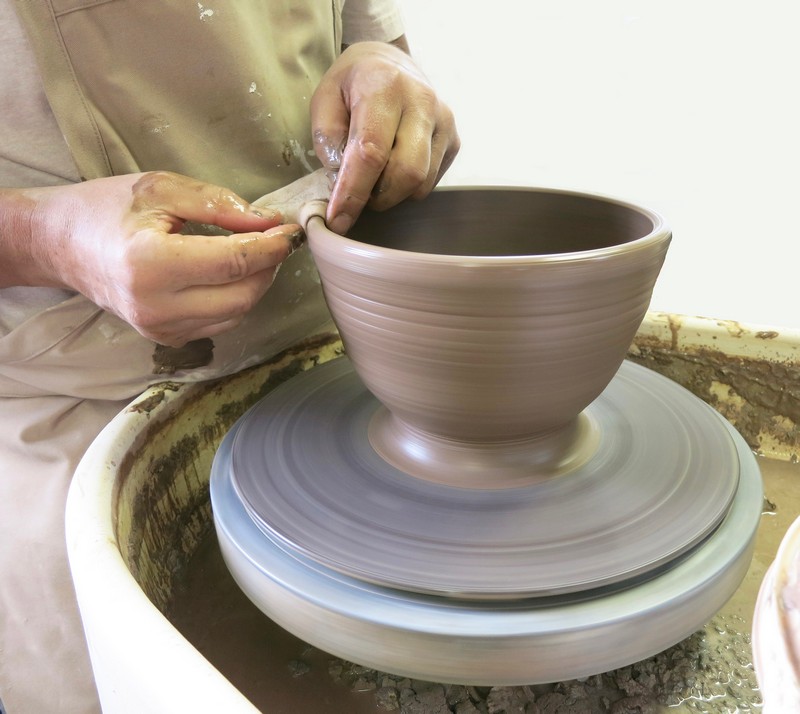
Use a kidney shaped rib to create an angled rim on the form.
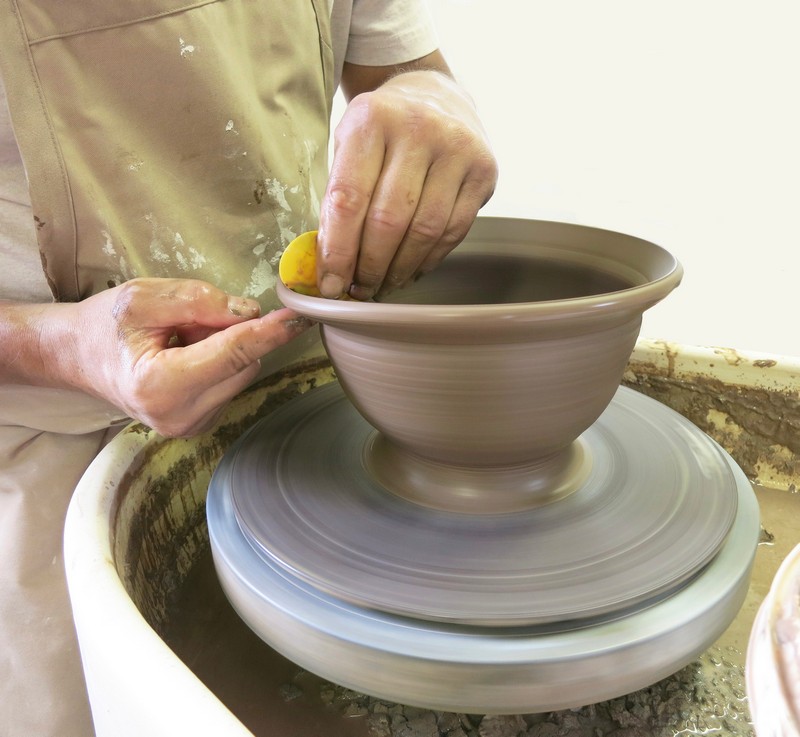
Smooth the rim again with a wet shammy.
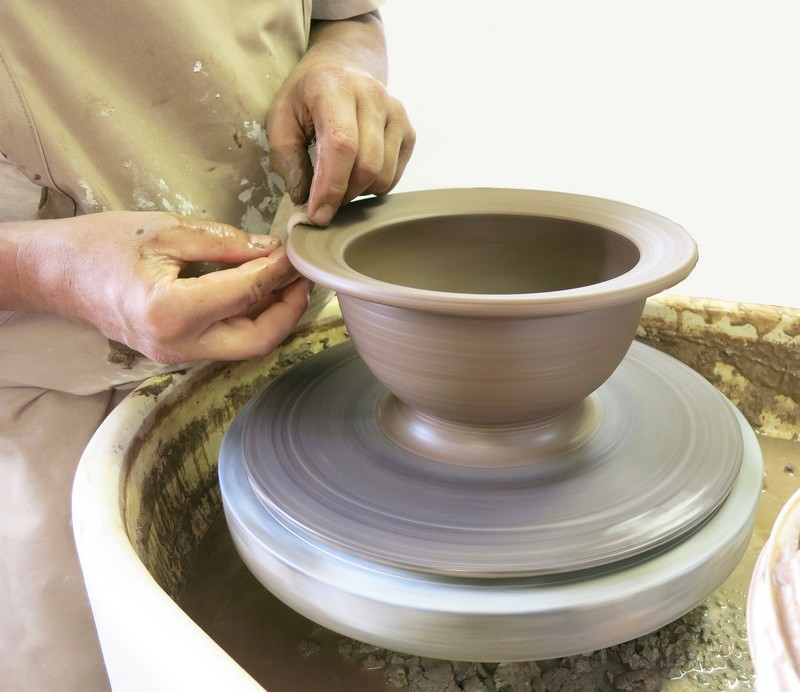
Leave the rim smooth or create a decorative surface using a texture tool.
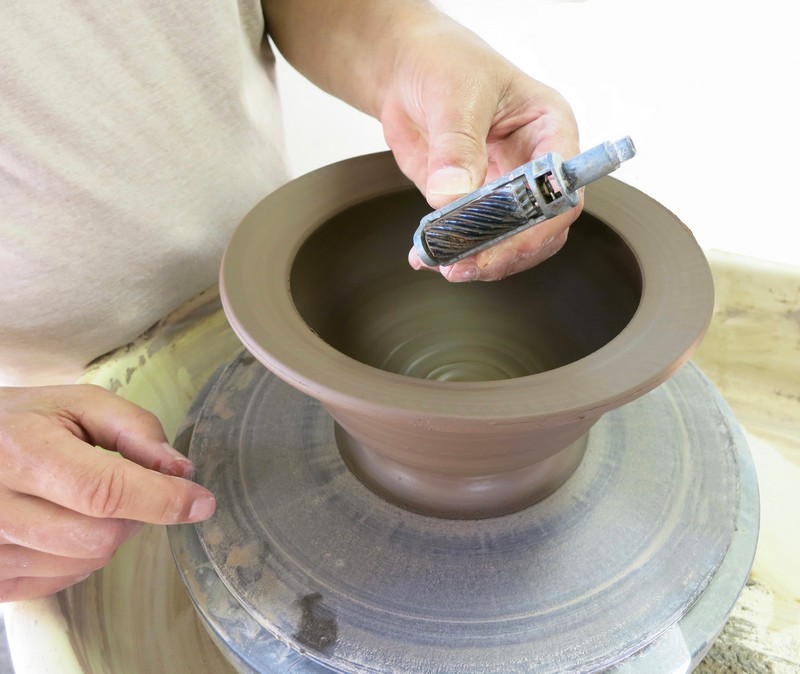
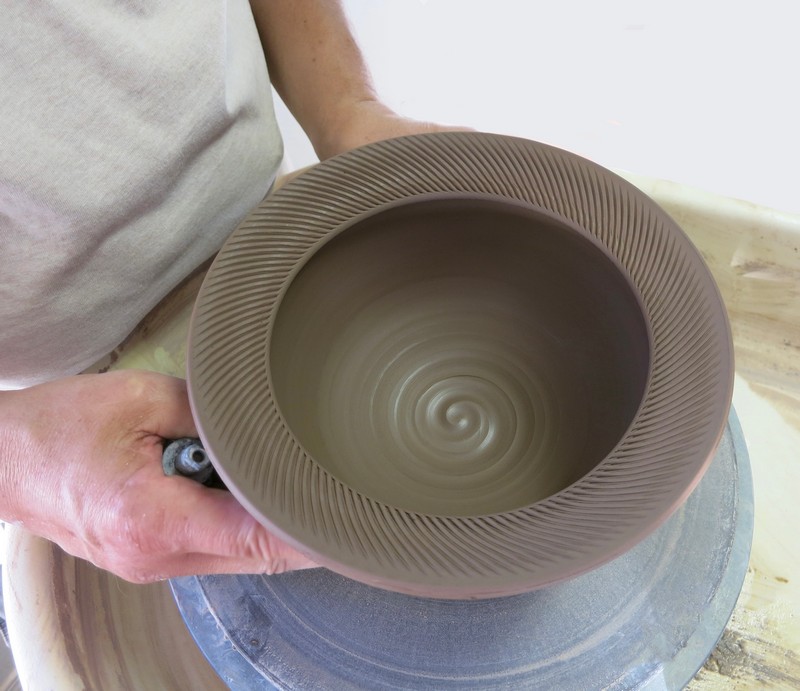
Step 6
Base
Loosen the bottom of the form using a felting knife. Remove the form from the pottery bat using a wire tool.
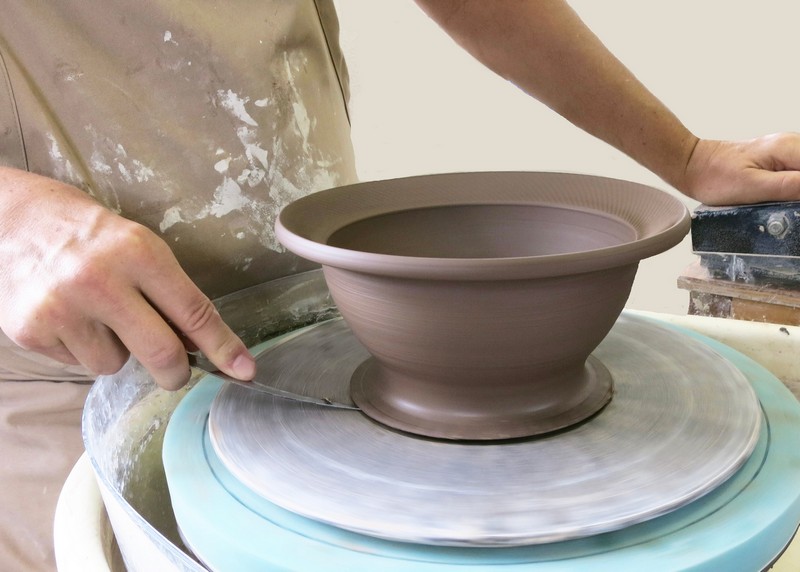
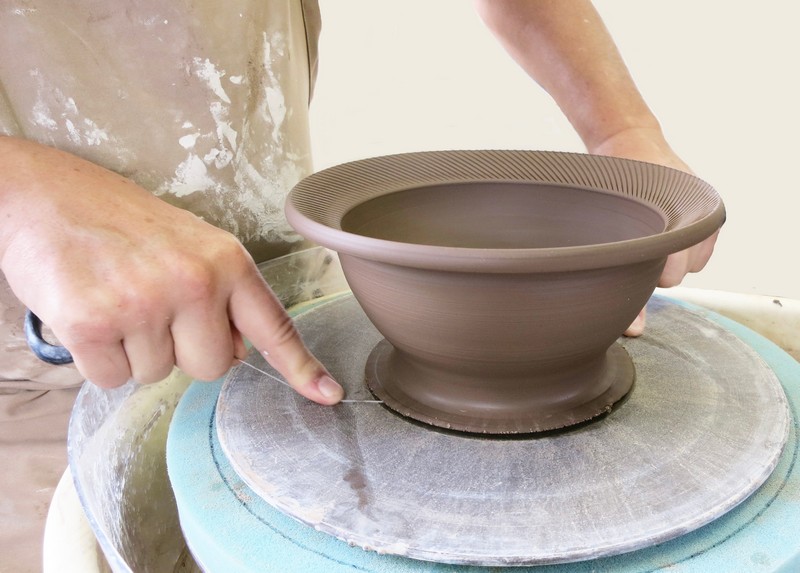
Step 7
Stiffen The Clay
Allow the clay to dry to a leather hard state.
*Leather hard clay is clay that has started to dry but has some flexibility; it can still be carved, cut, and joined together, but it is hard like a block of cheese.
Step 8
Trim
Position the leather hard form onto the foam bat. Remove excess clay from the base of the form using the trimming tool.
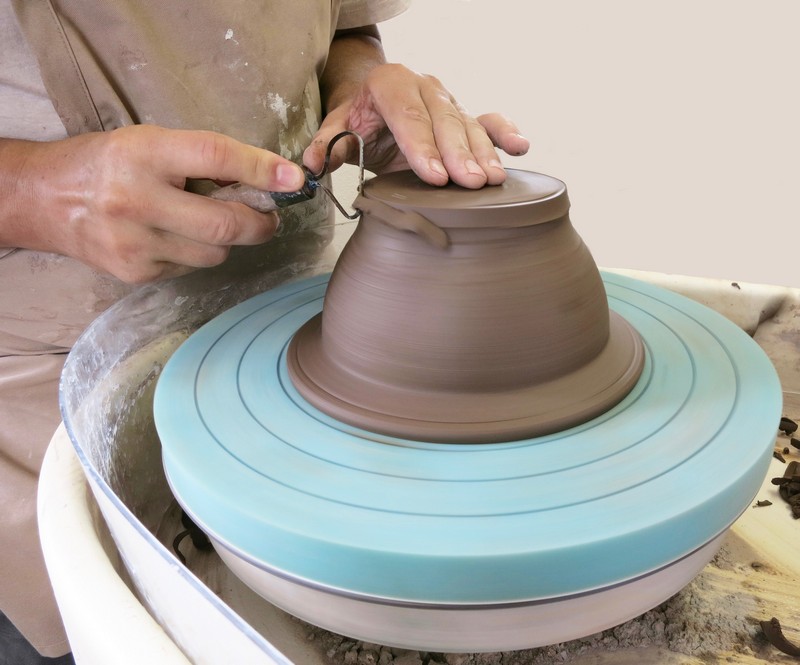
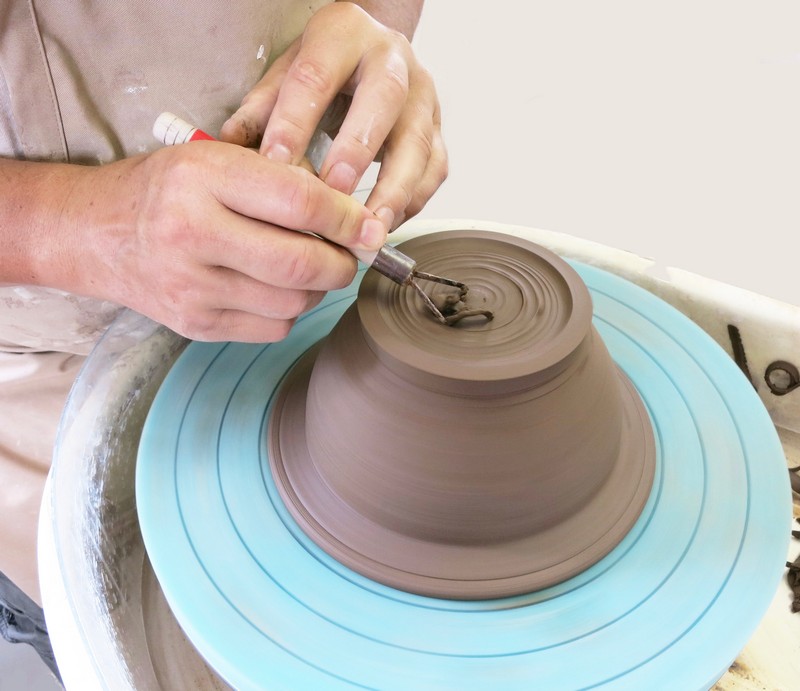
Smooth any rough spots with a damp sponge.
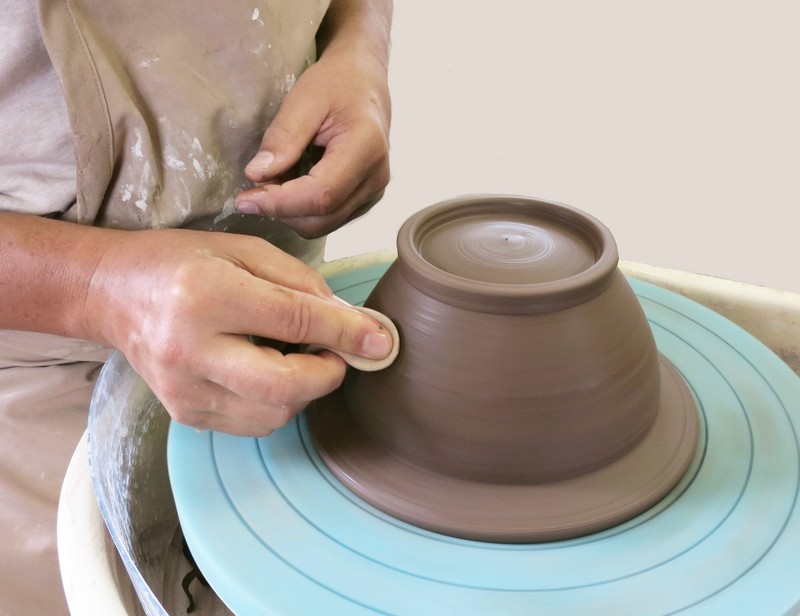
Step 9
Colander Holes
Position the pottery form in the center of the Decorating Disk.
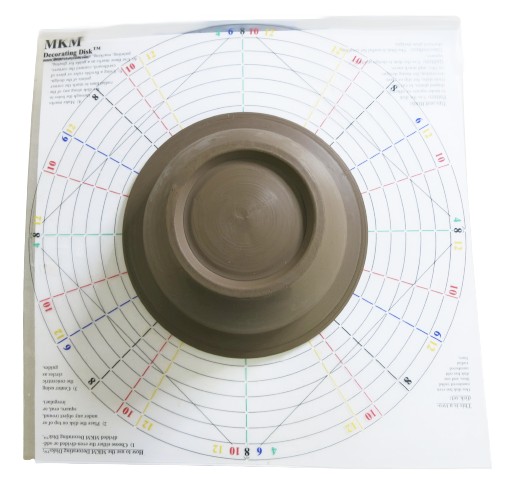
Use the clay hole punch to make evenly spaced holes in the sides of the pottery form.
Make enough holes for a fare amount of water to drain out of the form when in use.
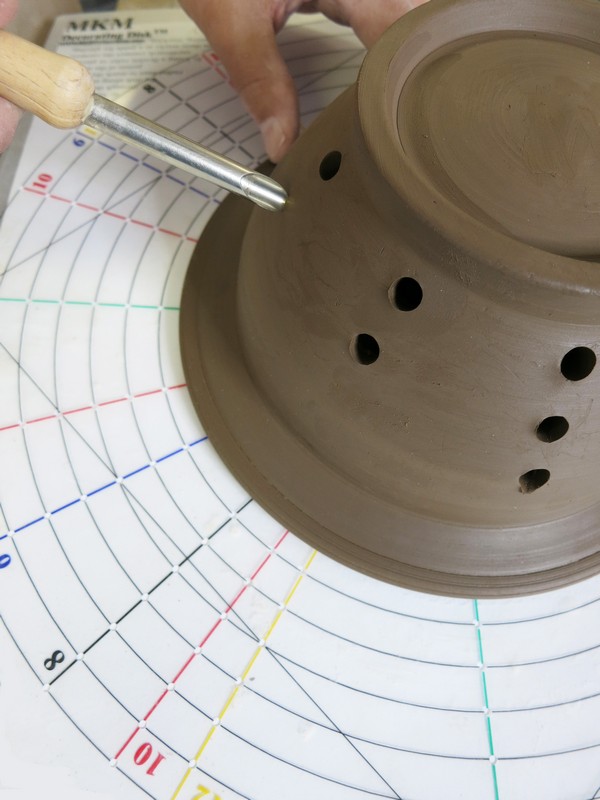
Step 10
Dry
Allow the clay to bone dry.
*Bone Dry is clay from which as much water as possible has evaporated from the piece; if you hold it to your cheek, it will seem dry instead of cold and damp.
This clay looks and feels chalky and is very fragile; it is at this stage that clay pieces are fired in the kiln.
Step 11
Bisque Fire
Fire the clay form in the kiln to bisque fire temperature.
*Bisqueware is an unglazed clay piece that has been fired in the kiln once at a low temperature and is ready to be glazed.
Step 12
Glaze
Apply a high fire glaze to the bisque colander.
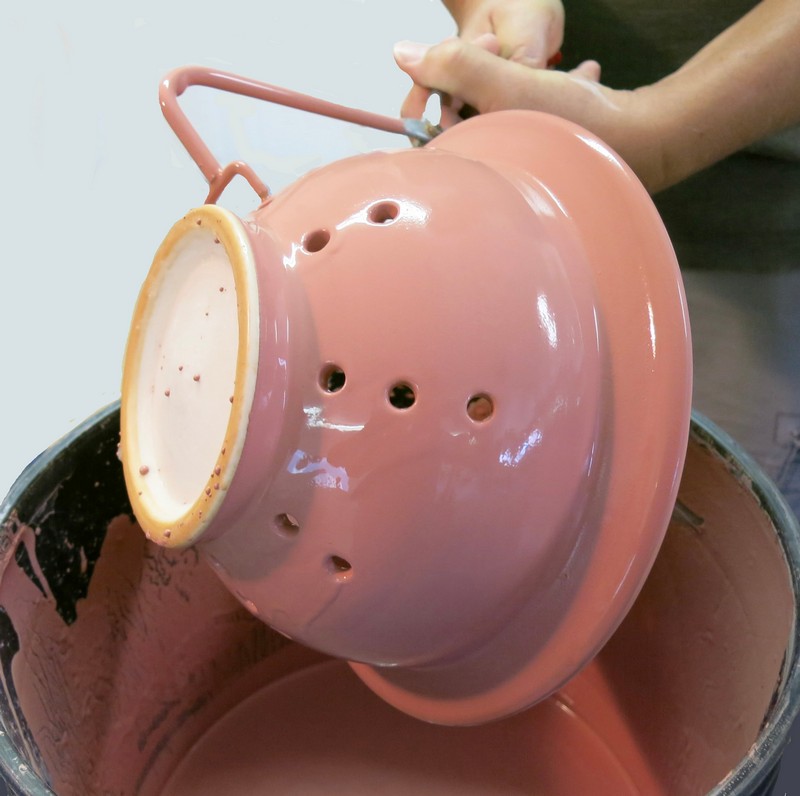
Step 13
Glaze Fire
Fire the glazed colander in the kiln.
*Glazeware is a clay piece that has been fired twice - once in a bisque firing and a second time in a glaze firing; it has a glossy or matte glasslike finish and a smooth texture.

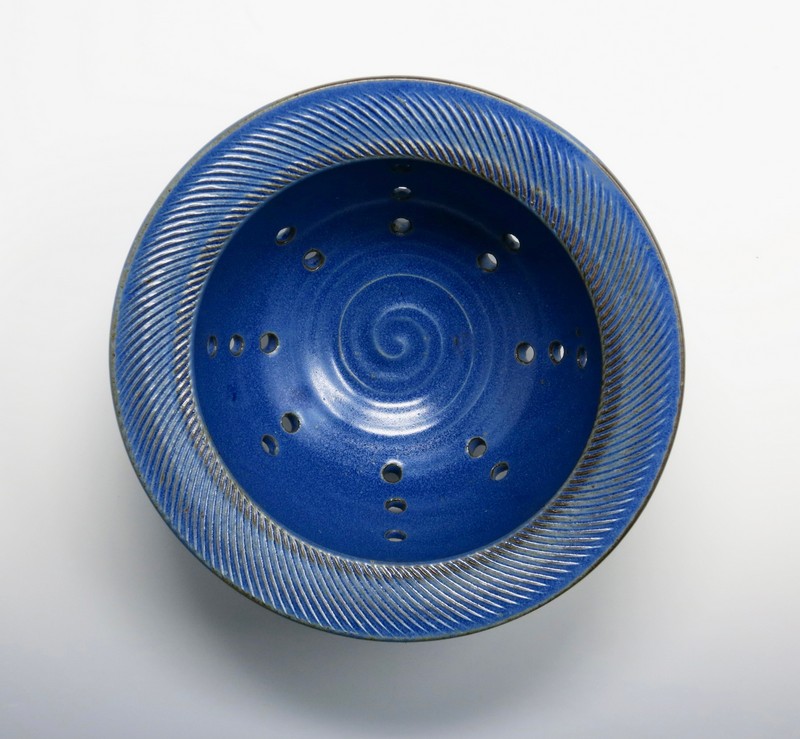
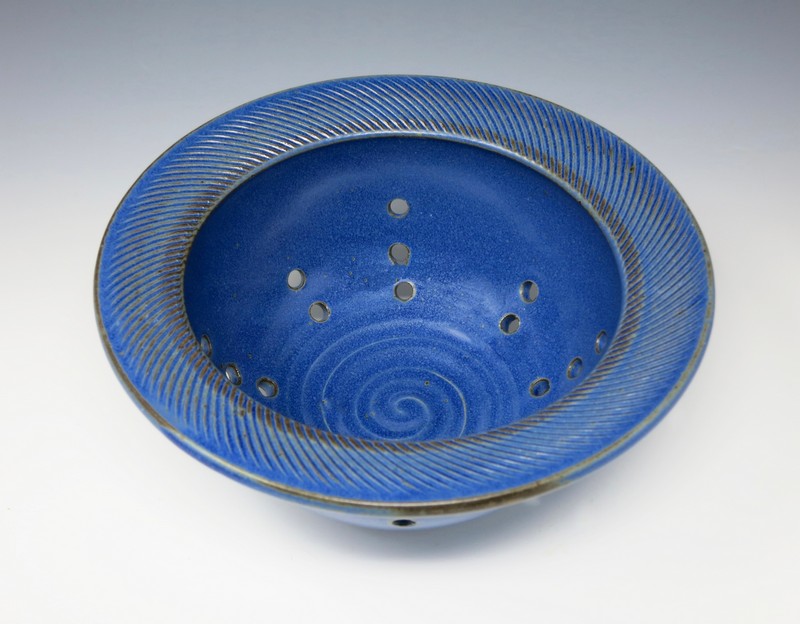
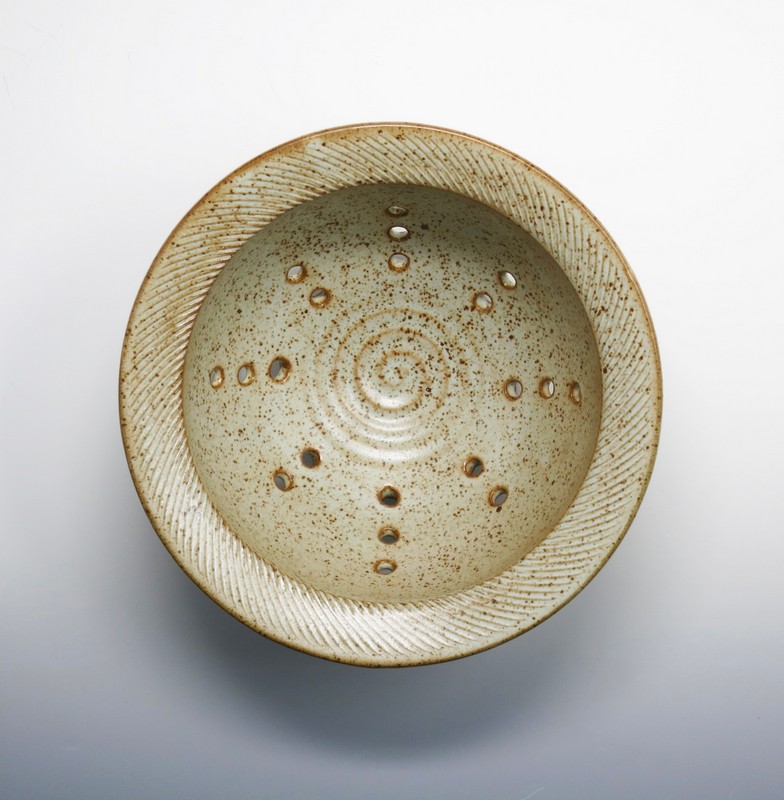
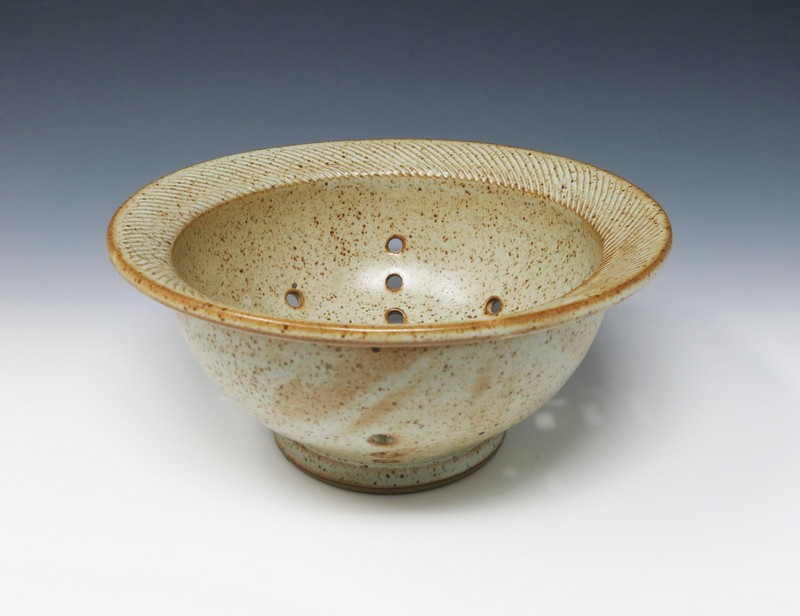


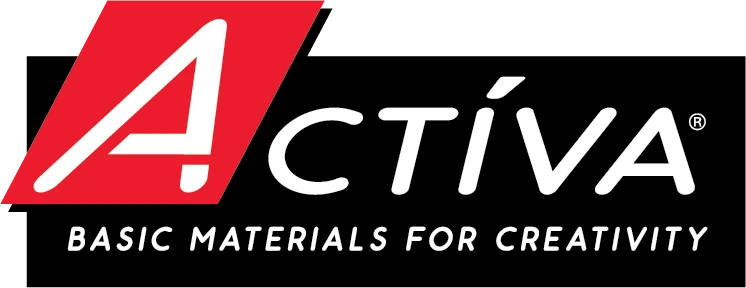

 />
/>
 />
/>